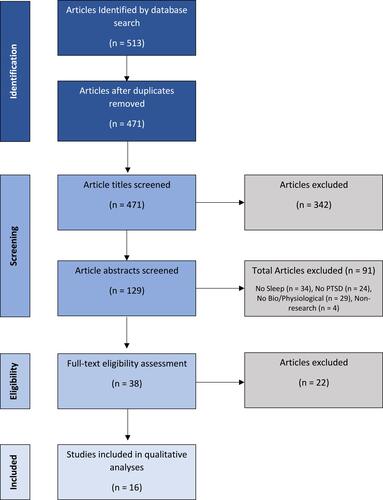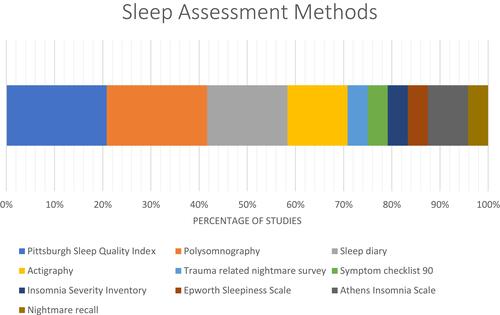Figures & data
Table 1 Literature Search Strategy, Consisting of Medical Subject Headings (MeSH) and Keywords. OVID Online Platform Was to Search EMBASE, Medline, AMED, PsychINFO Databases
Figure 1 Summary of literature screening method employed. A total of 513 articles were identified using the search strategy developed. After removal of duplicates, 471 articles were retained for title and abstract screening, following which 38 were retained for full-text eligibility assessment. Sixteen studies were deemed to meet all the inclusion criteria and were subject to analyses.

Table 2 Summary of Data Extraction from Included Studies
Table 3 Grading of Recommendations, Assessment, Development, and Evaluations (GRADE) Assessment of Evidence Quality. Final GRADE Quality Assessment Possibilities; High, Moderate, Low, Very Low
Figure 2 Graphic showing the different sleep assessment methods employed across the included studies, as a percentage of the total number methods. Pittsburgh Sleep Quality Index (21.7%), Polysomnography (21.7%), Sleep diary (17.4%), Actigraphy (13%), Trauma-related nightmare survey (4.3%), Symptom checklist 90 (4.3%), Insomnia Severity Inventory (4.3%), Epworth Sleepiness Scale (4.3%), Athens Insomnia Scale (4.3%), dichotomous nightmare recall (4.3%).

